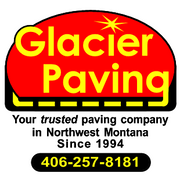
While sunshine may be excellent for your lawn, flowers, and garden, those same rays of UV light can spell trouble for your driveway. Over time, your driveway can become more gray, brittle, and prone to damage, which can cause problems for the driveability of the surface. Here is a little more information about how the sun can affect asphalt, and what to do about the problem.
What to Know About UV Light and Asphalt
How Can Sunlight Damage Asphalt?
Dark colors and rough textures attract sunlight, which is bad news for your driveway. By absorbing UV light, asphalt can become as much as 10 degrees hotter than the ambient air temperature. This can break down its binders.
Over time, asphalt can become more brittle and prone to fine cracks, allowing aggregates in the roadway to slough off. When small portions fail, they can result in larger issues, such as potholes. As water penetrates, freezes, and expands in damaged asphalt, it can break apart large portions of your driveway.
How Can You Prevent Problems?
 Fortunately, you can prevent issues with your asphalt by protecting it against sunlight as much as possible. Consider planting some trees in your yard to provide some break from the sun, or putting up a fence around your property to cast a shadow in the afternoon sun. Sealcoat your driveway at least once every two to five years to keep it black, smooth, and in good condition.
Fortunately, you can prevent issues with your asphalt by protecting it against sunlight as much as possible. Consider planting some trees in your yard to provide some break from the sun, or putting up a fence around your property to cast a shadow in the afternoon sun. Sealcoat your driveway at least once every two to five years to keep it black, smooth, and in good condition.
If your asphalt looks like it could use a little TLC, turn to Glacier Paving Inc in Kalispell, MT. Since their inception in 1994, these trusted professionals have been working with clients to improve everything from roadways to driveways, creating gorgeous, smooth, reliable driving and walking surfaces. To find out more about how they can help your team, visit their website or give their team a call at (406) 257-8181.
About the Business
Have a question? Ask the experts!
Send your question

